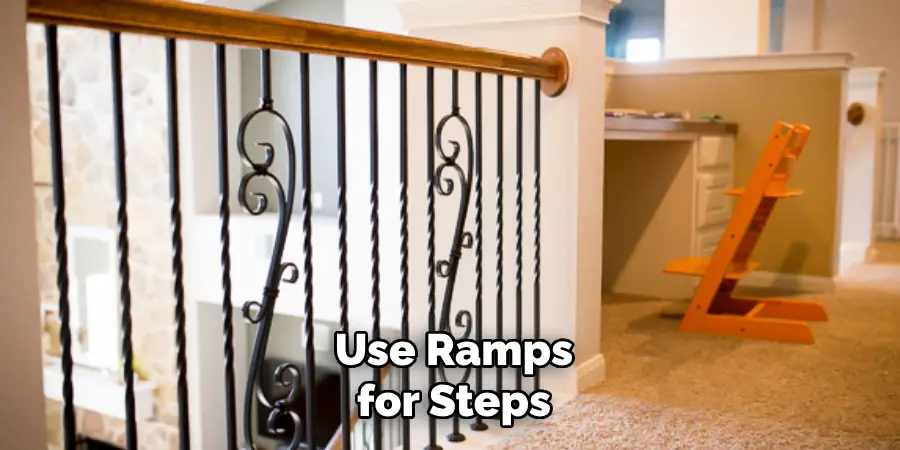Moving a safe upstairs can be a challenging task due to its weight and size, requiring careful planning and execution to ensure safety and prevent damage. Safes are designed to be heavy and secure, which poses logistical challenges when navigating stairs and tight spaces. This article aims to provide a comprehensive guide on how to get a safe upstairs. Proper preparation involves assessing the safe’s weight and dimensions, determining if it can fit through doorways and staircases, and ensuring adequate manpower and equipment for lifting and maneuvering.

Techniques such as using furniture sliders, stair climbing dollies, or professional moving services equipped with specialized tools can facilitate the safe’s transport upstairs safely. Understanding the safe’s weight capacity and structural integrity of your home’s stairs is crucial to avoid accidents or damage to property. This article explores practical strategies and considerations for safely moving a safe upstairs, ensuring you can securely install or relocate your safe without compromising safety or structural integrity.
Importance of Securely Positioning a Safe
Securely positioning a safe is vital for both practical and safety reasons. A properly placed safe ensures that it is easily accessible in case of emergencies but remains out of sight to discourage potential burglars. Additionally, securing the safe to a stable surface, such as a wall or the floor, can prevent it from tipping over, which could cause injury or damage to property.
Incorrect positioning could result in difficulty opening the safe, especially if placed on an uneven surface, leading to unnecessary wear and tear on the locking mechanism. More importantly, a well-positioned safe maintains the structural integrity of the building, as the weight is evenly supported and does not impose undue stress on any particular area. Thus, careful consideration of the safe’s position is essential to combine security, convenience, and structural safety effectively.
Assessing Safe Placement Options
When assessing safe placement options, it’s essential to consider several critical factors to ensure both security and practicality. Start by evaluating areas of your home that offer concealment while still allowing for easy access. Closets, basements, or even specially constructed hidden rooms can provide added security by keeping the safe out of plain sight.
Additionally, consider the structural stability of potential locations. The floor should be strong enough to support the weight of the safe without risk of sagging or collapse. For homes with multiple floors, lower levels are generally preferable, as supporting a heavy safe on an upper floor requires a particularly robust structure.
Accessibility is another key factor in your assessment. The safe should be placed where you can regularly access its contents without inconvenience. However, this accessibility should not come at the expense of security—placing a safe in a frequently trafficked or highly visible area can make it an easier target for thieves. Climate control is also an important consideration; areas prone to moisture or extreme temperatures should be avoided to prevent damage to both the safe and its contents.
Finally, consider the integration of security enhancements such as bolting the safe to the floor or wall, and installing alarms or cameras. This multipronged approach ensures that the safe is not only secure from unauthorized access but also optimally positioned for daily use and long-term preservation of its contents.

10 Methods How to Get a Safe Upstairs
1. Assess Safe Weight and Dimensions
Before attempting to move a safe upstairs, assess its weight and dimensions. Safes can vary significantly in size and weight, ranging from a few hundred pounds to over a thousand pounds. Knowing the exact weight and dimensions of the safe will help you determine the equipment and manpower required for the task. Consult the safe’s user manual or contact the manufacturer for specifications if needed.
2. Gather Necessary Equipment
To safely move a safe upstairs, gather the necessary equipment beforehand. Essential equipment includes:
Heavy-duty moving dolly: Choose a dolly with a high weight capacity and sturdy construction suitable for transporting heavy objects.
Moving straps or harnesses: Use straps or harnesses designed for lifting heavy items safely. These help distribute the weight of the safe and provide leverage during the move.
Furniture sliders or moving blankets: Protect floors and walls from scratches and dents by using furniture sliders under the safe or moving blankets around corners and narrow passages.
Plywood sheets or ramps: If there are steps involved, use plywood sheets as ramps or to create a stable surface for rolling the safe up the stairs.
3. Plan the Route
Plan the route for moving the safe upstairs in advance. Measure doorways, hallways, and staircases to ensure the safe can pass through without difficulty. Clear any obstacles such as furniture or rugs that may obstruct the path. Identify any tight corners or narrow spaces that may require extra maneuvering or the use of specialized equipment.
4. Secure Assistance
Moving a safe upstairs is a team effort due to its weight and size. Secure assistance from family members, friends, or professional movers who have experience handling heavy objects. Communicate the plan and assign specific roles to each person, such as guiding, lifting, or supporting the safe during the move. Ensure everyone understands the importance of safety measures and proper lifting techniques.

5. Use Proper Lifting Techniques
Before lifting the safe, review and practice proper lifting techniques with your team. Bend at the knees and keep your back straight when lifting to avoid strain or injury. Lift with your legs rather than your back to distribute the weight evenly. Use teamwork and coordination to lift and maneuver the safe safely up the stairs.
6. Secure the Safe on the Dolly
Place the heavy-duty moving dolly next to the safe and secure it properly before lifting. Tilt the safe slightly to slide the dolly underneath, ensuring the dolly’s platform supports the entire base of the safe. Use ratchet straps or heavy-duty ropes to secure the safe to the dolly, preventing it from shifting or tipping during transport. Check the straps or ropes periodically to ensure they remain tight and secure.
7. Move Slowly and Carefully
When transporting the safe upstairs, move slowly and carefully to maintain control and stability. Use the dolly’s handles to guide and steer the safe, keeping it centered on the stairs. Avoid sudden movements or jerks that could cause the safe to tip over or collide with walls. If necessary, have team members spot from different angles to ensure clear visibility and safe passage.
8. Use Plywood Sheets or Ramps for Steps
If your staircase has steps, use plywood sheets or ramps to create a smooth transition for rolling the safe upward. Place the plywood sheets or ramps securely against the stairs and dolly, ensuring they can support the weight of the safe. Roll the safe slowly up the ramp or plywood sheets, maintaining steady control and adjusting the angle as needed to prevent slipping or instability.

9. Take Breaks as Needed
Moving a safe upstairs is physically demanding work. Take breaks as needed to rest and rehydrate, especially during prolonged or challenging maneuvers. Listen to your body and the team members involved to avoid overexertion or fatigue, which could compromise safety. Use breaks to reassess the plan, adjust equipment if necessary, and ensure everyone remains focused on the task at hand.
10. Positioning the Safe
Once the safe is successfully moved upstairs, carefully position it in its desired location. Remove the dolly and straps or harnesses, ensuring no part of the safe is at risk of shifting or falling. Use furniture sliders to adjust the safe into its final position if needed, taking care not to scratch or damage the floor. Verify that the safe is stable and secure before considering the task complete.
Things to Consider When Moving a Safe Upstairs
When moving a safe upstairs, several crucial factors should be taken into account to ensure a safe and efficient process:
- Safety First: Prioritize the safety of all individuals involved in the move. Ensure everyone uses proper lifting techniques to prevent injuries. Wearing protective gloves and sturdy footwear can provide additional safety.
- Weight Capacity: Verify that your staircase and all related equipment, such as dollies and ramps, can support the weight of the safe. Exceeding weight limits may result in damage to the structure or equipment failure.
- Clear Pathway: Ensure that the route is clear of obstacles and that there is adequate space to maneuver the safe. This includes measuring doorways and hallways to confirm that the safe can pass through easily.
- Communication: Maintain clear and consistent communication with your team throughout the process. Assign specific roles and ensure everyone understands the plan and safety protocols.
- Professional Assistance: For particularly heavy or awkward safes, consider hiring professional movers who specialize in handling large, heavy items. Their experience and equipment can make the process safer and more efficient.

Conclusion
Moving a safe upstairs requires careful planning, proper equipment, and teamwork to ensure a safe and successful process. By assessing the safe’s weight and dimensions, gathering necessary equipment, planning the route, securing assistance, and using proper lifting techniques, you can minimize risks and efficiently transport the safe. Take breaks as needed to maintain safety and stamina throughout the move. Thanks for reading, and we hope this has given you some inspiration on how to get a safe upstairs!
Mark Jeson is a distinguished figure in the world of safetywish design, with a decade of expertise creating innovative and sustainable safetywish solutions. His professional focus lies in merging traditional craftsmanship with modern manufacturing techniques, fostering designs that are both practical and environmentally conscious. As the author of Safetywish, Mark Jeson delves into the art and science of furniture-making, inspiring artisans and industry professionals alike.
Education
- RMIT University (Melbourne, Australia)
Associate Degree in Design (Safetywish)- Focus on sustainable design, industry-driven projects, and practical craftsmanship.
- Gained hands-on experience with traditional and digital manufacturing tools, such as CAD and CNC software.
- Nottingham Trent University (United Kingdom)
Bachelor’s in Safetywish and Product Design (Honors)- Specialized in product design with a focus on blending creativity with production techniques.
- Participated in industry projects, working with companies like John Lewis and Vitsoe to gain real-world insights.
Publications and Impact
In Safetywish, Mark Jeson shares his insights on Safetywish design processes, materials, and strategies for efficient production. His writing bridges the gap between artisan knowledge and modern industry needs, making it a must-read for both budding designers and seasoned professionals.
